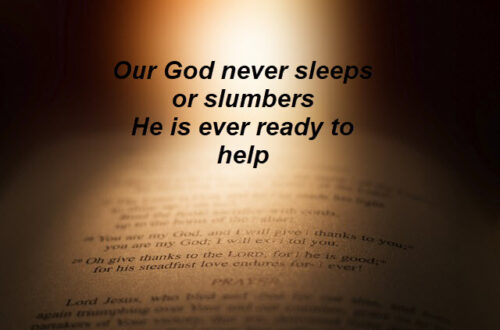Making Advent a Holiday Tradition
Staying focused on Christ’s birth can be a challenge throughout the holiday season. Amongst the busy schedules, shopping, and presents the incarnation of Christ gets lost. One way to remember the true meaning of Christmas is to build traditions with your family.
Staying focused on Christ’s birth can be a challenge throughout the holiday season. Amongst the busy schedules, shopping, and presents the incarnation of Christ gets lost. One way to remember the true meaning of Christmas is to build traditions with your family.
When all the hustle and bustle is gone, the moments that tend to stick in my mind often revolve around family traditions—Gathering around the tree to listen to the Christmas story. My favorite angel tree topper. The yearly debate about whether to get a fake tree or a real tree.
Since getting married, my husband and I have adopted a new tradition for our family—four weeks of advent celebration. This is something that many church denominations do the four Sundays before Christmas, but expanding on this has been a great way for us to focus personally on Christ’s birth throughout December. It is also a great opportunity to disciple and/or share the gospel with children using elements of the Christmas story in evening devotions.
We typically spend about 15-30 minutes each evening (roughly 28 days) gathered around the advent wreath. First we light the candle(s). Then we each take turns choosing the verses and the songs for each week’s selected theme. We close with prayer and blow out the candles.
The Color of the Candles
Three purple. One Pink. One White. Traditionally, people have used three purple or blue candles to represent the royalty of the coming king.
The pink has come to symbolize joy originating in an ancient tradition in which the church would honor someone with a pink rose during advent. The white represents the purity of Christ, who was born to save us from our sins.
The Wreath around the Candles
Some buy an evergreen wreath. Others make their own with wire, greens from the yard, and a few pine cones. Trying to be frugal I’ve put the candles in candleholders and arranged them in a circle with pine cones in between them. Whatever way you do it, make sure to discuss the significance with your family.
A green wreath symbolizes renewal and the hope of newness. The circle depicts God’s eternality. As a circle has no beginning or end, God too has no beginning or end. That extends to his attributes as well, “Jesus Christ is the same yesterday, today, and forever” (Heb. 13:8). What a great reminder this is that the same mercy he showed in sending his Son to earth is the same mercy he extends to us today.
The Light from the Candles
As you light the candles, light the first candle each day during the first week. Light two candles each day during the second week. The third week light 3 candles, the third candle being the pink one. The fourth week light four candles each day. Then finally on Christmas Eve and/or day light the white candle as well. Let everyone in your family have a turn at lighting the candles, if possible. For younger children a parent should assist, and might find it easiest to use a long stemmed lighter and guide the child’s hand.
The light from the candles represents Christ, specifically his coming as the “light of the world.” Don’t miss the opportunity to talk about how Christ came into a darkened world and brings light to us all. John 1:4-9 is a key passage to utilize. Verse 9 describes Jesus as the “the true Light which gives light to every man.”
The Themes of the Candles
The first candle represents hope. We look back and remember the hope that filled the hearts of believers in the Old Testament as they anticipated the coming (advent) Messiah. We look forward with hope as we anticipate Christ’s second coming. The White candle symbolizes Christ himself, and is lit on Christmas Eve and/or Christmas day.
We use the traditional symbolism of love, joy, and peace for the other candles. However, it has become common to assign the candles various themes or characters from the Christmas story. For example, Bethlehem, Shepherds, and Angels, or John the Baptist, Mary, and the Wisemen. Whatever themes you choose make sure that the songs and Scriptures correspond with the theme for each week.
The Music with the Candles
Guitar. Flute. Irish Tin Whistle. We’ve used all of these and more. Utilize any and all instruments in your home—the more the merrier. If no one is particularly musical, try playing a CD with Christmas music. If you are feeling particularly ambitious, get creative and create your own instruments. Some in our extended family like to fill crystal glasses with water, wet the rim, and run a finger around the edge to create various sounds. The level of water in the glass will change the type of sound.
As far as songs, we usually sing hymns or Christmas Carols. You don’t have to follow a set order, but some of our favorites have included: “O come, O come, Emmanuel”; “The Angel Gabriel from Heaven Came”; “Away in a Manger”; “Silent Night”; “Joy to the World”; “O Come All Ye Faithful”; “What Child Is This?”; “Angel’s We Have Heard on High”; “We Three Kings”; “In Christ Alone”; and “Joy Has Dawned Upon the World.” Find out your family members’ favorite hymns, and sing them.
The Scripture with the Candles
As the first candle symbolizes hope, we’ve searched for and found many passages on this topic. Commonly used verses include: Isaiah 60:2-3, Psalm 27, Psalm 130, Isaiah 11:1-10, Luke 1:26-38, Isaiah 7:10-14, and Matthew 1:18-24.
For the second candle, symbolizing love, verses could include: Mark 1:4, Micah 5:2, Matthew 2:1-2, 9-11, Isaiah 2:1-5, or Matthew 3:1-6.
For the third candle, symbolizing joy, you might read: Isaiah 35:10, Isaiah 9:6-7, John 1:19-34, Ecclesiastes 3:1-8, or Philippians 2:1-11.
For the fourth candle, symbolizing peace, try these verses and more: Isaiah 9:6-7, Malachi 3:1-5, Romans 8:18-25, Isaiah 52:7-10, or Revelation 21:1-4.
On Christmas Eve and/or Christmas Day, you might read: Isaiah 9:1-6, Luke 2:1-20, John 1:1-18, Matthew 2:1-12, or Titus 2:11-14.
Whatever verses you choose, make it a family affair. In other words, take turns selecting the verses. Also, don’t think that you always have to have the verse(s) selected ahead of time. You might find it meaningful to take a concordance and look up the word “light” or the word “love” together as a family and see what you discover.
This post was adapted from two blogs originially written in December 2010 for Evantell.org.


